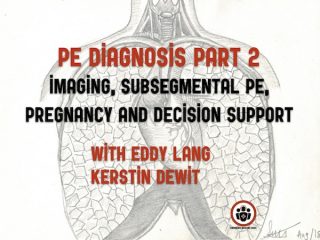EM Cases emergency medicine education podcast
BCE 76 Opioid Withdrawal
In anticipation of EM Cases Episode 116 on Opioid Misuse, Overdose and Withdrawal, Dr. Michelle Klaiman, Addictions and Emergency Medicine specialist, tells her Best Case Ever exemplifying how we can positively impact the lives of ED patients for years to come - even when they present with simple, run-of-the-mill diagnoses - by thinking outside the box and doing brief screening and interventions for patients with opioid use disorder. She discusses alternative pain control options as well as the use of suboxone to treat opioid withdrawal and opioid addiction.Best Case Ever exemplifying how we can positively impact the lives of ED patients for years to come, even when they present with simple, run-of-the-mill diagnoses, by thinking outside the box and doing brief screening and interventions for patients with opioid use disorder.










